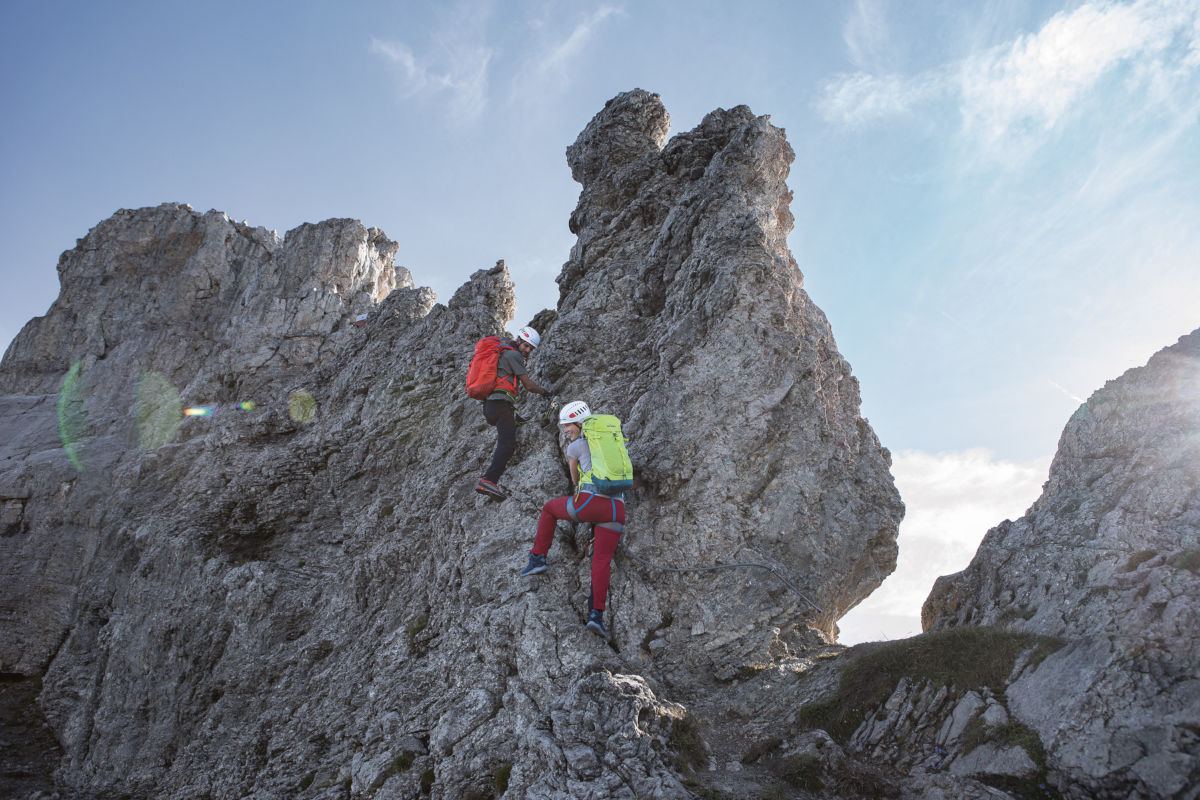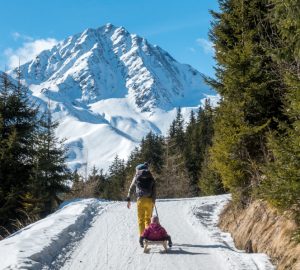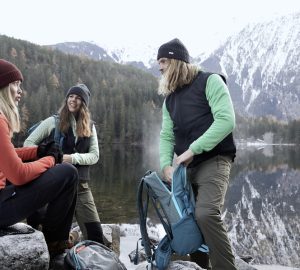The range of outdoor activities and challenges has never been as broad as when it comes to via ferratas: The requirements can reach from a nicely secured high route to overhanging cliffs for pros. Tatonka tells you what to keep in mind for active high routes, when preparing yourself and packing your equipment.
During the past years, via ferratas have become more and more popular. Today, they are even recognised as a discipline within mountaineering. The possibilities are endless – the German website klettersteige.de alone operates over 1,600 vie ferrate only in Europe.
In the beginning they used to be simple hiking paths secured with steel ropes. But after some time loops, ladders, rungs or spikes made of iron as well as steel ropes were installed in natural or artificial rocks. And this is how a climbing trail is made accessible despite being imponderable. You can make your way hand over hand along the iron appliances – but they also provide a security option for the climber.
As via ferratas exist in different difficulty levels everyone, from beginner to expert, can experience this great outdoor adventure.
Difficulty levels
Unfortunately, there is no recognised scale that would let us categorise the difficulty levels of all vie ferrate. The most common one is probably the lettered scale ranging from A to E:
A identifies simple, secured via ferratas, which mostly lead through moderately steep areas equipped with ladders and iron clamps. Steel ropes often make for handrails. Via ferratas of the A category also offer easy-to-access set out passages, rungs and handles are easy to reach. But of course, climbers should be sure-footed and have a head for heightss. A-vie ferrate are perfect for beginners and families to get a feeling for the stone and the moves.
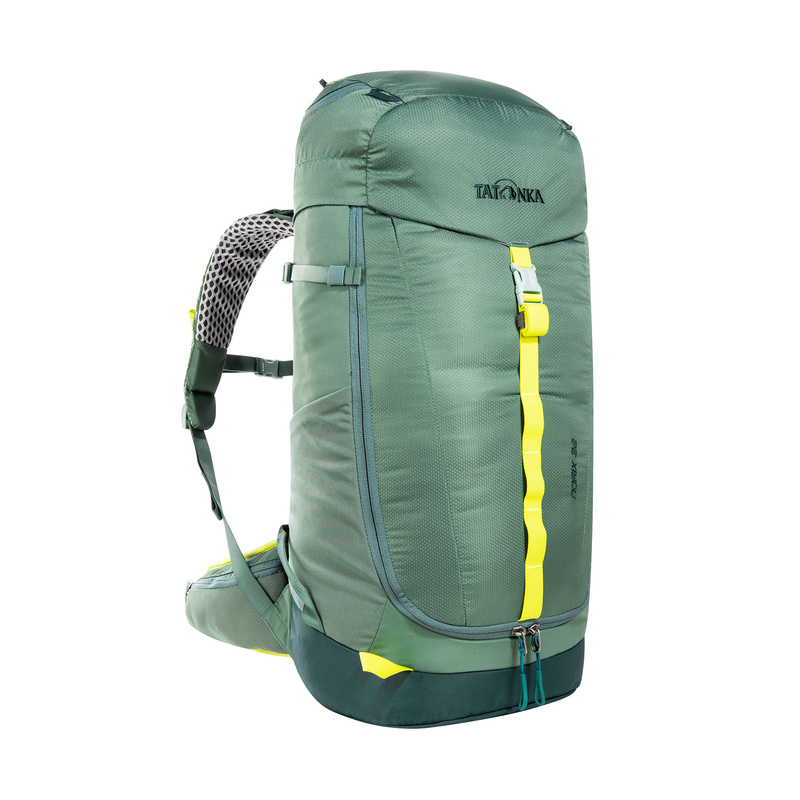
Perfect companion for via ferrata tours
The Norix 28 and Norix 32 backpacks are the perfect companions for your next hiking or via ferrata tour thanks to their features.
With large front access, side pockets, material loops and practical carabiner fixations on the shoulder straps.
A bit more challenging, yet still suitable for beginners, are the via ferratas of the category B. Their routes lead via ladders, iron clamps, rungs and chains. Self-belaying with a special system for vie ferrate is from here on mandatory.
Vie ferrate of the category C can already be rather strenuous. Vertical or slightly overhanging ladders and handles and rungs fixated further apart impose quite some challenges on the climbers. You are moving through a steep, partly even very steep rocky areas and therefore need good stamina and body control to get through these passages.
The letter D indicates very difficult via ferratas that lead through set out, vertical and often times also overhanging rocky areas. As the different climbing aids are often far apart, suspending the belaying carabiner can already be very exhausting. Having climbing experience is definitely a plus here: This way you have a chance to move forward conserving your energy and using natural handles and rungs.
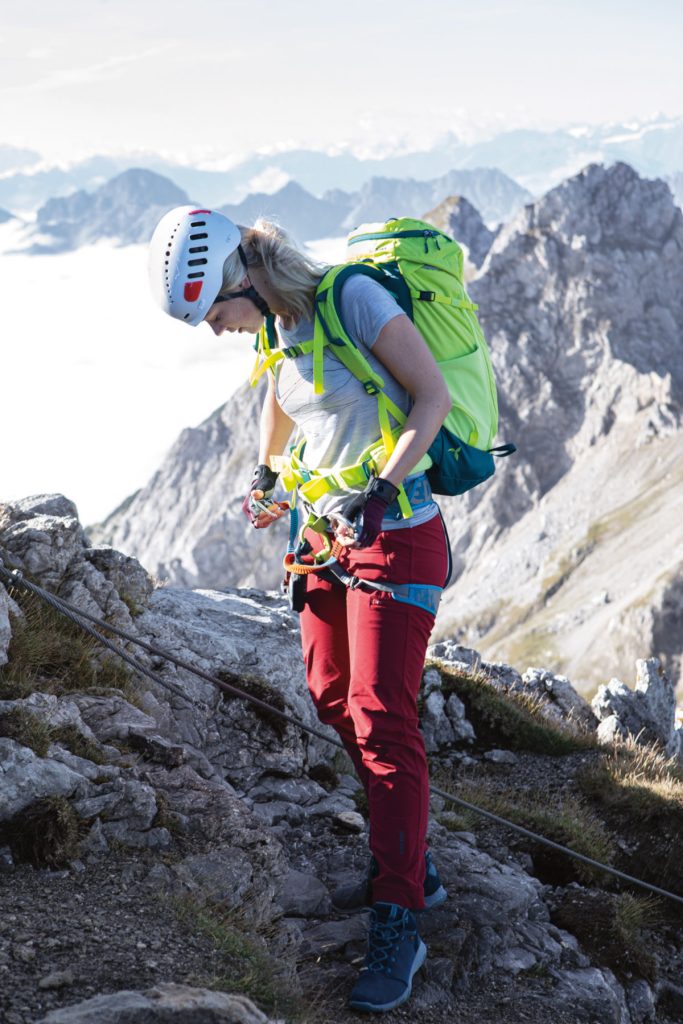
E-categorized vie ferrate are only for experienced climbers: They impose extremely high demands on the climbers regarding strength, stamina, mobility and concentration. Sometimes, being able to get through is only possible with friction climbing, meaning climbing without handles or rungs, only with your hands and feet touching the rock.
But the ultimate via ferrata for strain, set-out settings and challenge are those of the category F. This area is mostly overhanging and it’s only possible to get through using very small steps or doing friction climbing. Good stamina and profound climbing experience, perfect body control and utter concentration are the basic requirements you need to complete this vertical quest. In addition to the obligatory climbing equipment for via ferratas it is wise to take a rope safety device of approx. 15 m length. In the Alpine region there are only two vie ferrate of the F category – the Bürgeralm and the Austrian Postalm via ferrata.
High-level equipment and performance
The right equipment plays a major role for a successful and safe via ferrata tour. Those who recklessly go on such a tour without the right equipment take an extremely dangerous risk. In general, if you stick to the rule to maintain three contact points, you will be able to get through a via ferrata saving your strength and staying safe: Get a safe grip on three points and out of this stable position always use on foot or one hand to get to the next rung or handle.
The main part of your equipment is the climbing kit for vie ferrate: Modern Y-shaped via ferrata lanyards[Izzy Puch1] offer highest safety standards. They have two carabiners that are hooked into the cable[Izzy Puch2] one after another. While on a via ferrata, always make sure that, before repositioning the carabiners, you stand in a stable position and that the distance between where you take the carabiners out and the new position is easy to reach. The carbiners are repositioned one after another to make sure that the belaying system is always connected with at least one carabiner hook. But the general rule is to make sure that both carabiners are hooked into the cable[Izzy Puch3] at all times.
These two special carabiners have an automated lock and they are very resilient and durable. Working together with the two rope ends and the dynamic brake, they help to keep the injury risk in case of a fall to a minimum. The climbing harness ideally consists of a combination of seat and chest belt: It fits comfortably and can easily be attached and taken off.
Gloves are part of the standard baggage on any via ferrata tour. They should be well padded and the palm area should be made of leather to keep the hands safe from grazes, calluses and blisters and also offer additional grip. Indispensable and, in many cases, life-saving is a special climbing helmet which reduces the force of a rockfall and which protects the head in case of a fall.
Another important issue on a via ferrata is the right shoe wear. For tours on easier via ferratas, light hikers are a good choice as they have a stable sole design. Shoes with an ankle-high, padded upper provide good grip and protection. For long, difficult tours that partly don’t have artificial climbing or stepping aids special boots for via ferratas with a so-called “Climbing Zone”, a non-profiled bit of the sole in the forefoot region, are the right choice.The soles have such an anti-skidding and slip-resistant form that the person wearing the boots will find safe grip even on the tiniest steps
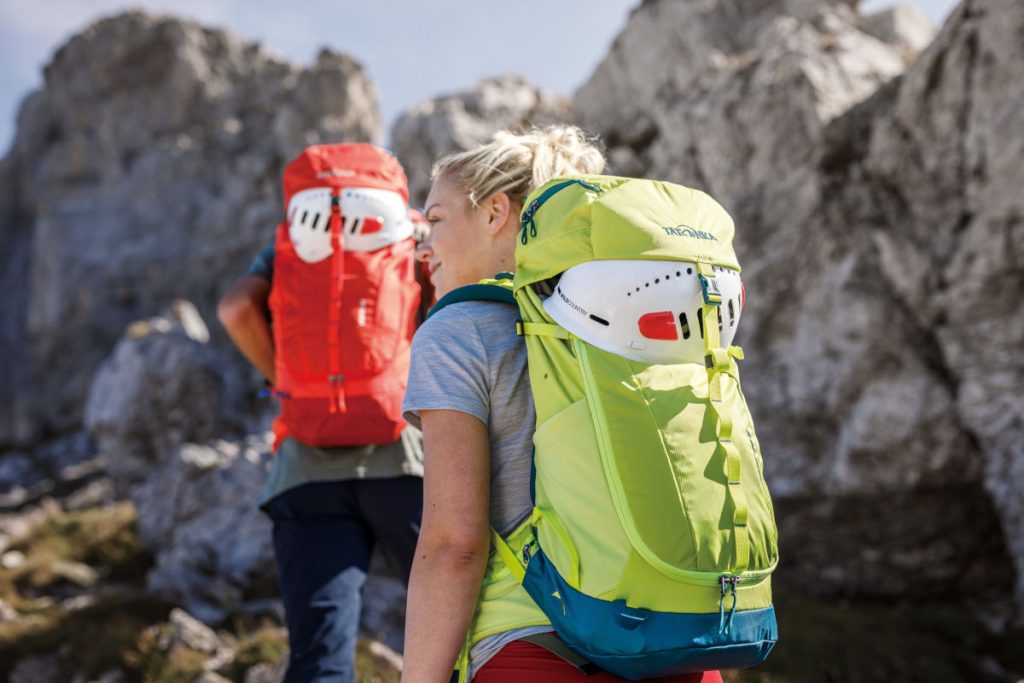
10 important vie ferrate rules
- 1. When planning a tour, always go after your skills and your stamina. Within a group, the “weakest” determines the details and the route.
- 2. Before you start the tour, inform yourself about the weather forecast and then plan your tour accordingly. It’s absolutely necessary that you set out early.
- 3. On many via ferratas you can’t just simply “get out” when you stamina is swindling or the weather turns uncertain: Don’t overestimate yourself and inform yourself about “emergency exits” before the tour so that you can cut short in case of emergency.
- 4. Safety is the essential thing during a via ferrata tour: helmet, climbing harness and via ferrata climbing kit are what you need. You should keep wearing your helmet even during breaks to be safe during possible rockfall. Hiking boots should be ankle-high and provide you with a comfortable grip and stability. For the case of an emergency it is good to have an additional rope of around 15 m with you.
- 5. But for a via ferrata tour you should only take the most essential things. What you should not forget to pack is a first-aid kit, weather protection, soft drinks and high-energy food such as nuts, dried fruits and energy bars you can easily grab on your tour. Sun glasses, a headtorch, a map and an altimeter are also part of your basic equipment.
- 6. The wire cables at the via ferrata are mostly for safety only – they should not be strained unnecessarily. Always make sure you also use natural handles and rungs in the stone and keep in mind that one section of the cable[Izzy Puch4] is only used by one climber.
- 7. But also wire cables and anchorings can be full of pitfalls, damaged or loose. Please report faulty safeguards to a mountain hut, the mountain railway or, down in the valley, to the transport office or the police.
- 8. During your tour you should always walk carefully but steadily and avoid rockfall.
- 9. And always keep an eye on the weather! As soon as a thunderstorm is about to gather, quickly get away from ridges and iron parts that attract and may derive lightnings. This imposes real dangers to your life.
- 10. At a sudden fall of temperature better turn around and go back – even if the via ferrata seems to be no challenge.

Useful links
Reliable weather forecast can be found here: alpenverein.de (or for Switzerland meteoschweiz.admin.ch for all countries meteoblue.com
A good website to get an idea of the level of difficulty and the different stages of a via ferrata is klettersteig.de. You can also find there an overview over via ferratas in Europe. They are explained and illustrated with maps. Also, the users can rate and comment on the different via ferratas in the community.
Further tips for tours worldwide as well as recommendations for accommodation are found here: via-ferrata.de




